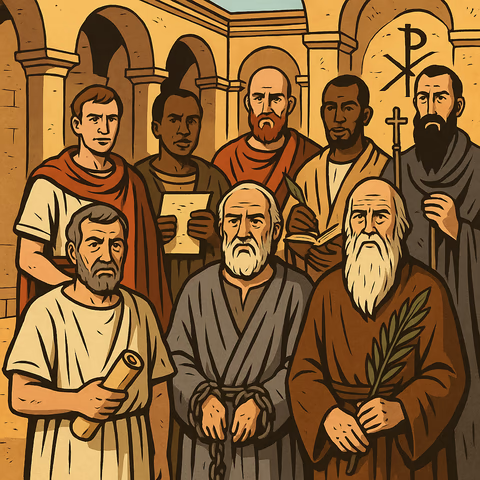
Timeline of Church Fathers and Their Doctrines
The early Christian writers who wrote after the completion of the Bible are known today as the ‘Church Fathers’. They shaped how Christianity would develop over the centuries.
From simple letters addressing local church problems to complex philosophical treatises, their works show Christianity’s dramatic evolution from a small Jewish offshoot to eventually fusing with Greek philosophy and becoming the dominant religion of the Roman Empire.
These writers didn’t always agree! While some embraced Greek philosophy as a tool for understanding Christian truth, others warned against mixing ‘Athens with Jerusalem.’ Their debates about Jesus’s nature, the afterlife, and church authority would establish patterns of thought that still influence Christianity today.
Many works were later falsely attributed to these early writers, showing how later Christians tried to claim ancient authority for their own evolving beliefs. This timeline traces both authentic works and later forgeries, revealing how Christian thought developed – and was sometimes reimagined – across the centuries.
Dates
All dates in this timeline show the estimated composition dates of the written works, not the dates of their authors’ lives.
Timeline
AD 50-150
The Didache
The Didache (‘Teaching of the Twelve Apostles’) is first compiled, though its exact date is disputed. While parts may be from the first century, scholars note significant additions from later times.
Key positions:
- Trinity: The baptismal formula is included, but without theological elaboration, and may be a later addition.
- Heaven: Describes ‘life eternal’ but without specifying location.
- Hellfire: Brief mentions of judgment without detail.
- Soul: No explicit soul doctrine.
- Authority: Focuses on practical church order.
- Heresy: Concerned with false prophets’ behavior rather than doctrine.
- End Times: Detailed apocalyptic scenario with signs preceding Christ’s return.
The text shows signs of multiple layers of composition:
- Original Jewish-Christian ethical manual (possibly AD 50-70).
- Church order regulations (added AD ~100).
- Liturgical elements (various later additions).
- Apocalyptic section (possibly later addition).
Several manuscripts show further medieval modifications and expansions.
AD 95-110
Clement of Rome
Clement of Rome writes his First Epistle to the Corinthians, one of the earliest Christian texts outside the New Testament.
Key positions:
- Trinity: No developed trinity doctrine; speaks of Jesus as subordinate to God.
- Heaven: Speaks of resurrection and being ‘gathered into the number of the elect’.
- Hellfire: No mention of eternal torment.
- Soul: No discussion of immortal soul doctrine.
- Authority: Emphasizes church unity and respect for appointed leaders.
- Heresy: Focuses on unity rather than doctrinal conformity.
- End Times: Emphasizes resurrection but provides few details about Christ’s return.
Notable works:
- First Epistle to the Corinthians (authentic)
- Second Epistle to the Corinthians (falsely attributed, AD ~140-160)
- Five other spurious letters (various later dates)
Pseudo-Clementine literature (2nd-4th centuries):
- Recognitions
- Homilies
- Two Epistles on Virginity
- Several other epistles and decretals
AD 95-135
Epistle of Barnabas
The Epistle of Barnabas appears, traditionally attributed to Barnabas but likely pseudonymous.
Key positions:
- Trinity: No developed doctrine
- Heaven: Emphasizes spiritual interpretation of promises
- Hellfire: No mention
- Soul: Focus on spiritual transformation
- Authority: Emphasizes allegorical interpretation of Old Testament
- Heresy: Warns against Judaizing
- End Times: Discusses signs of the end times
AD 107-110
Ignatius
Ignatius of Antioch writes seven authentic letters while being transported to Rome for execution.
Key positions:
- Trinity: Calls Jesus ‘God’, or possibly, ‘a god’, in a way distinct from later trinity doctrine
- Heaven: Speaks of ‘attaining to God’ after death
- Hellfire: Mentions ‘unquenchable fire’ but unclear if literal
- Soul: No explicit immortal soul doctrine
- Authority: Strong emphasis on episcopal authority
- Heresy: First to use term ‘catholic church’; warns against Docetism
- End Times: Limited discussion of Christ’s return
Notable works:
Authentic letters (AD ~107-110):
- To the Ephesians
- To the Magnesians
- To the Trallians
- To the Romans
- To the Philadelphians
- To the Smyrnaeans
- To Polycarp
Pseudo-Ignatian letters (created AD ~360-380):
- Six additional forged letters
- Heavily interpolated versions of authentic letters adding stronger trinitarian language
AD 110-130
Papias
Papias of Hierapolis's works survive only in fragments quoted by later writers.
Key positions:
- Trinity: Unknown
- Heaven: Described a very physical paradise
- Hellfire: No clear position preserved
- Soul: Unknown
- Authority: Emphasized oral tradition over written
- Heresy: No clear positions preserved
- End Times: Taught literal thousand-year reign of Christ
Notable works:
- Exposition of the Sayings of the Lord (five books, now lost)
- Known primarily through quotations by Irenaeus and Eusebius
AD 140-160
Marcion
Marcion of Sinope produces the first known Christian canon. However, he is not considered a church father, but rather a heretic! We include him here because he was influential in Christian history, although most of what we know about him comes from his opponents.
Key positions:
- Trinity: Taught two different Gods
- Heaven: Taught salvation for spiritual beings only
- Hellfire: Rejected eternal torment
- Soul: Limited discussion preserved
- Authority: Emphasized Paul’s writings above all others
- Heresy: Considered heretical by other Christians
- End Times: Limited information survives
Notable works:
- First Christian canon (now lost)
- Antitheses (reconstructed from opponents’ quotations)
AD 150-155
Justin Martyr
Justin Martyr writes his major apologetic works.
Key positions:
- Trinity: Describes Jesus as ‘another God’ under the Father
- Heaven: Teaches righteous souls await resurrection in better place
- Hellfire: Teaches punishment for the wicked, but its eternal nature is unclear
- Soul: Argues for natural immortality of soul
- Authority: Emphasizes apostolic tradition but relies heavily on philosophy
- Heresy: Focuses on defending Christianity against paganism
- End Times: Detailed teaching on millennium and resurrection
Notable works:
- First Apology (AD ~150)
- Second Apology (AD ~155)
- Dialogue with Trypho (AD ~155)
- Several spurious works later attributed to him
Pseudo-Justin works (various later dates):
- Questions and Responses to the Orthodox
- Questions of the Christians to the Gentiles
- Questions of the Gentiles to the Christians
- On the Resurrection
- Hortatory Address to the Greeks
AD 150-225
Epistle to Diognetus
The anonymous Epistle to Diognetus is written.
Key positions:
- Trinity: Early Christian understanding of God and Logos
- Heaven: Christians as ‘citizens of heaven’
- Hellfire: Talked of eternal fire for the condemned
- Soul: Focus on Christian life in the world
- Authority: Emphasizes divine revelation
- Heresy: Critiques both Judaism and paganism
- End Times: Limited eschatological discussion
Its authenticity it unclear. The last two chapters are often considered spurious later additions.
AD 155-160
Polycarp
Polycarp writes his only surviving authentic work.
Key positions:
- Trinity: Simple biblical language about Father and Son
- Heaven: No explicit teaching on heavenly reward
- Hellfire: No explicit eternal torment doctrine
- Soul: No discussion of soul immortality
- Authority: Emphasizes moral conduct over church hierarchy
- Heresy: Warns against those who deny Christ’s coming in flesh
- End Times: Limited discussion of judgment day
The Martyrdom of Polycarp, an account written shortly after his death (AD ~155-160).
Ignatius was the last of the ‘Apostolic Fathers’, a group of early Christian writers who were contemporaries of the apostles.
AD 160-170
Theophilus of Antioch
Theophilus of Antioch writes his defense of Christianity.
Key positions:
- Trinity: First to use term trias (triad) in discussing God, though different from later trinity doctrine
- Heaven: Describes paradise as both past and future state
- Hellfire: Teaches conditional immortality
- Soul: Soul neither immortal nor mortal by nature
- Authority: Emphasizes Hebrew prophets over Greek philosophy
- Heresy: Focuses on paganism rather than internal disputes
- End Times: Limited discussion of final judgment
Notable works:
- To Autolycus (authentic)
- Commentary on the Gospels (lost)
- Other works known only by title
AD 165-175
Tatian’s Works
Tatian, a former student of Justin Martyr, produces significant works before his later break with mainstream Christianity.
Key positions:
- Trinity: Logos theology similar to Justin Martyr
- Heaven: Speaks of immortality as future gift
- Hellfire: Taught soul’s mortality
- Soul: Denied natural immortality
- Authority: Emphasized scripture over tradition
- Heresy: Later considered heretical for ascetic views
- End Times: Limited surviving discussion of final judgment
Notable works:
- Address to the Greeks (authentic)
- Diatessaron (first gospel harmony)
- Several lost works mentioned by others
AD 170-180
Melito of Sardis
Melito writes important early Christian works.
Key positions:
- Trinity: No mention, focuses on Father and Son
- Heaven: Emphasizes bodily resurrection and future kingdom
- Hellfire: Limited surviving discussion
- Soul: Emphasized bodily resurrection
- Authority: Produced first known Christian canon of Old Testament
- Heresy: Defended Christianity to Roman authorities
- End Times: Speaks of Christ’s return and judgment
Notable works:
- On Pascha (authentic)
- Various fragments preserved by others
- Several works known only by title
AD 180-185
Irenaeus
Irenaeus writes his comprehensive work Against Heresies.
Key positions:
- Trinity: Develops concept of divine economy; Son and Spirit as God’s ‘hands’
- Heaven: Teaches physical resurrection and earthly kingdom
- Hellfire: May have taught eternal conscious torment, but this is unclear
- Soul: Argues against natural immortality but for eternal preservation
- Authority: Strongly emphasizes apostolic succession
- Heresy: First systematic refutation of ‘heresies’
- End Times: Detailed millennial teaching with physical paradise
Notable works:
- Against Heresies (authentic)
- Demonstration of Apostolic Preaching (authentic)
- Various fragments of other works
AD 190-200
Clement of Alexandria
Clement of Alexandria writes his major works combining Christianity with Greek philosophy.
Key positions:
- Trinity: Logos doctrine influenced by Platonism
- Heaven: Describes progressive advancement through heavens
- Hellfire: Sees punishment as remedial
- Soul: Heavily influenced by Greek philosophy
- Authority: Balances scripture, reason, and tradition
- Heresy: More inclusive approach to Greek philosophy
- End Times: Allegorical interpretation of prophecies
Notable works:
- Protrepticus (Exhortation)
- Paedagogus (The Instructor)
- Stromateis (Miscellanies)
- Several works survive only in fragments
AD 197-220
Tertullian
Tertullian produces numerous theological works.
Key positions:
- Trinity: First to use term ‘trinitas’; sees Son as subordinate to Father
- Heaven: Describes paradise as temporary holding place
- Hellfire: Vivid descriptions of eternal torment
- Soul: Argues soul is corporeal but immortal
- Authority: Initially supports church authority, later joins Montanists
- Heresy: Develops rule of faith against heretics
- End Times: Detailed millennial expectations
Notable works:
- Apologeticus (AD 197)
- Against Praxeas (AD ~213)
- On the Flesh of Christ
- Against Marcion
- Over 30 other surviving works
AD 215-254
Origen
Origen writes his most significant theological texts. Some of his works were later considered heretical.
Key positions:
- Trinity: Teaches eternal generation of Son but clear subordination
- Heaven: Multiple heavens with progressive spiritual advancement
- Hellfire: Suggests eventual universal salvation
- Soul: Pre-existence of souls and eventual restoration
- Authority: Emphasizes allegorical interpretation
- Heresy: More inclusive approach to divergent views
- End Times: Spiritualized interpretation of prophecies
Notable works:
- On First Principles (authentic)
- Against Celsus (authentic)
- Commentary on John
- Many works survive only in fragments or translations
Pseudo-Origen works appear in later centuries, especially on biblical commentary.
AD 250-258
Cyprian
Cyprian of Carthage writes extensively on church unity.
Key positions:
- Trinity: Uses biblical language about Father, Son, and Spirit without developed theological framework
- Heaven: Emphasizes heavenly reward for martyrs
- Hellfire: Emphasizes eternal punishment
- Soul: Limited discussion of soul’s nature
- Authority: Strong emphasis on episcopal authority
- Heresy: ‘No salvation outside the church’
- End Times: Focus on immediate persecution rather than final times
Notable works:
- On the Unity of the Catholic Church
- Various letters and treatises on church discipline
- Works on martyrdom and persecution
After this, the fathers are known as the Nicene and Post-Nicene Fathers.
AD 250-400
Pseudo-Hippolytus
Works falsely attributed to Hippolytus include:
- On the End of the World (3rd century)
- Against Beron and Helix (3rd-4th century)
- On the Twelve Apostles
- Various liturgical texts
- Homilies on various topics
These works significantly influenced later theological developments, especially regarding liturgical practices and eschatology.
AD 250-500
Pseudo-Cyprian
Works falsely attributed to Cyprian include:
- On Rebaptism (3rd century)
- On Dice Players (3rd-4th century)
- On the Calculation of Easter (4th century)
- Against Jews (4th-5th century)
- Various sermons and treatises
AD 347-380
Athanasius
Athanasius produces key theological writings. He played a major role in the Council of Nicaea.
Key positions:
- Trinity: Champions full deity of Christ and Spirit
- Heaven: Teaches deification of believers in heaven
- Hellfire: Teaches eternal conscious torment
- Soul: Emphasizes immortality through Christ
- Authority: Strongly defends Nicene orthodoxy
- Heresy: Primary opponent of Arianism
- End Times: Limited focus on eschatology
Notable works:
- On the Incarnation
- Life of Anthony
- Orations Against the Arians
- Letters to Serapion
Several works falsely attributed to him appear in later centuries.
AD 350-600
Pseudo-Basil
Works falsely attributed to Basil the Great include:
- Additional ascetic rules (4th-5th century)
- Homilies on creation (5th century)
- Letters on monastic life
- On Consolation in Adversity
- Various spiritual treatises
AD 370-379
Basil the Great
Basil of Caesarea, known as Basil the Great, produces influential theological and monastic works. One of the most important of the Cappadocian Fathers, a trio who helped shape Church theology, especially the doctrine of the Trinity, devotion to Mary, and monasticism.
Key positions:
- Trinity: Developed technical language distinguishing ousia and hypostasis
- Heaven: Emphasized monastic life as foretaste of heaven
- Hellfire: Traditional view of eternal punishment
- Soul: Focus on spiritual development
- Authority: Balance of episcopal and monastic authority
- Heresy: Opposed Arianism and pneumatomachians
- End Times: Focus on present spiritual transformation
Notable works:
- On the Holy Spirit
- Against Eunomius
- Monastic Rules
- Hexaemeron (sermons on creation)
AD 374-397
Ambrose of Milan
Ambrose serves as Bishop of Milan and produces significant works. Had great influence on Augustine.
Key positions:
- Trinity: Strongly defends Nicene orthodoxy
- Heaven: Develops theology of Christian mysteries
- Hellfire: Eternal punishment
- Soul: Influenced by Neo-Platonism
- Authority: Strong episcopal authority
- Heresy: Opposed Arianism and paganism
- End Times: Focus on present spiritual reality
Notable works:
- On the Duties of the Clergy
- On the Holy Spirit
- On the Mysteries
- Various hymns and letters
AD 372-390
Gregory of Nazianzus
Gregory of Nazianzus, known as ‘The Theologian,’ writes major theological works.
One of the Cappadocian Fathers.
Key positions:
- Trinity: Refined trinitarian theology through Theological Orations
- Heaven: Described progressive spiritual ascent
- Hellfire: Suggested possibility of temporal punishment
- Soul: Emphasized soul’s journey toward God
- Authority: Balanced contemplation and active ministry
- Heresy: Systematic opposition to Arianism
- End Times: Focus on spiritual rather than literal interpretation
Notable works:
- Five Theological Orations
- Autobiographical poems
- Funeral orations
- Various theological discourses
AD 372-394
Gregory of Nyssa
Gregory of Nyssa develops mystical theology.
One of the Cappadocian Fathers.
Key positions:
- Trinity: Philosophical defense of trinity doctrine
- Heaven: Taught doctrine of eternal spiritual progress
- Hellfire: Suggested eventual universal restoration
- Soul: Detailed theory of spiritual development
- Authority: Emphasized mystical experience
- Heresy: Opposed Eunomians
- End Times: Universal restoration (apokatastasis)
Notable works:
- Life of Moses
- On the Making of Man
- Against Eunomius
- Great Catechetical Oration
AD 380-400
Pseudo-Athanasius
Several works falsely attributed to Athanasius appear:
- Dialogue Against the Arians
- Dispute Between Athanasius and Arius
- Synopsis of Sacred Scripture
- Life of Saint Syncletica
- Various homilies and treatises
AD 382-405
Jerome
Jerome produces the Latin Vulgate translation of the Bible and other works.
Key positions:
- Trinity: Orthodox Nicene position
- Heaven: Teaches hierarchical heavenly rewards
- Hellfire: Teaches eternal punishment
- Soul: Created for each person
- Authority: Emphasizes biblical authority
- Heresy: Strong opponent of Origenism
- End Times: Mixed literal and allegorical interpretation
Notable works:
- Latin Vulgate translation
- Commentary on Matthew
- Against Jovinian
- Letters and polemical treatises
Several later works were falsely attributed to Jerome in medieval period.
AD 386-407
John Chrysostom
John Chrysostom, known for his preaching, produces extensive biblical commentaries.
Key positions:
- Trinity: Orthodox Nicene position
- Heaven: Emphasized practical Christian living
- Hellfire: Strong advocate of eternal punishment
- Soul: Focus on moral reformation
- Authority: Emphasized pastoral care
- Heresy: Focused on moral reform over theological speculation
- End Times: Literal interpretation of prophecies
Notable works:
- Homilies on various biblical books
- On the Priesthood
- Against Judaizing Christians
- Letters from exile
AD 397-430
Augustine
Augustine of Hippo writes his most influential texts.
Key positions:
- Trinity: Develops psychological analogies for Trinity
- Heaven: Describes beatific vision as highest good
- Hellfire: Strong advocate of eternal torment
- Soul: Created but immortal
- Authority: Balance of scripture and church authority
- Heresy: Systematic opposition to multiple ‘heresies’
- End Times: Amillennial interpretation of Revelation
Notable works:
- Confessions (397-400)
- On the Trinity (400-416)
- City of God (413-426)
- Retractations (426-427)
- Numerous other treatises and letters
Pseudo-Augustinian works (5th-12th centuries):
- On True and False Repentance
- On the Assumption of the Virgin Mary
- Sermons to the Brothers in the Desert
- Various other treatises and sermons
AD 400-600
Pseudo-Jerome
Works falsely attributed to Jerome include:
- Commentary on the Gospels
- On the Assumption of the Virgin
- Various letters on monastic life
- Martyrology of Jerome
- Commentary on the Psalms
AD 400-900
Pseudo-Chrysostom
Works falsely attributed to John Chrysostom include:
- Opus Imperfectum in Matthaeum (5th-6th century)
- Various liturgical texts (5th-9th centuries)
- Numerous homilies on feast days
- Spiritual treatises on prayer and fasting
- Letters on monastic discipline
AD 412-444
Cyril of Alexandria
Cyril of Alexandria writes major theological works and played a major role in the Council of Ephesus.
Key positions:
- Trinity: Develops Christological doctrine
- Heaven: Focus on union with Christ
- Hellfire: Eternal punishment
- Soul: Emphasis on Christ’s full humanity
- Authority: Strong papal and episcopal claims
- Heresy: Opposed Nestorianism
- End Times: Limited eschatological focus
Notable works:
- Against Nestorius
- Commentary on John
- Various letters and treatises
AD 440-461
Pope Leo I (Leo the Great)
Pope Leo I, known as Leo the Great, serves as Bishop of Rome and produces influential works. He played a major role in the Council of Chalcedon.
Key positions:
- Trinity: Refined Christological formulations
- Heaven: Emphasized role of church in salvation
- Hellfire: Eternal punishment
- Soul: Focus on Christ’s two natures
- Authority: Developed papal primacy doctrine
- Heresy: Opposed Monophysitism and Manichaeism
- End Times: Limited eschatological focus
Notable works:
- Tome of Leo
- Sermons on liturgical feasts
- Letters defending papal authority
- Various doctrinal treatises
AD 485-535
Pseudo-Dionysius
Pseudo-Dionysius writes influential mystical works, falsely attributed to the biblical Dionysius the Areopagite.
Key positions:
- Trinity: Mystical approach through negative theology
- Heaven: Detailed hierarchy of angelic beings
- Hellfire: Focus on mystical ascent rather than punishment
- Soul: Emphasis on mystical union with God
- Authority: Balanced ecclesiastical and mystical authority
- Heresy: Synthesis of Christian and Neoplatonic thought
- End Times: Mystical interpretation of prophecies
Notable works:
- On the Celestial Hierarchy
- On the Ecclesiastical Hierarchy
- On Divine Names
- Mystical Theology
- Ten Letters
AD 500-800
Pseudo-Gregory
Works falsely attributed to Gregory of Nyssa include:
- On the Soul and Resurrection (portions)
- Testimonies Against the Jews
- Various homilies
- Letters on the spiritual life
AD 590-604
Gregory the Great
Gregory I serves as Bishop of Rome and produces extensive writings.
Key positions:
- Trinity: Orthodox Nicene position
- Heaven: Wrote about the purgatory concept
- Hellfire: Detailed teaching on afterlife
- Soul: Emphasized pastoral care of souls
- Authority: Balanced papal authority with pastoral care
- Heresy: Focus on practical reform
- End Times: Detailed angelology and demonology
Notable works:
- Pastoral Rule
- Dialogues
- Moralia in Job
- Numerous letters and homilies
AD 600-636
Isidore of Seville
Isidore produces encyclopedic works preserving ancient knowledge.
Key positions:
- Trinity: Traditional Nicene orthodoxy
- Heaven: Systematic organization of theological concepts
- Hellfire: Eternal punishment
- Soul: Synthesis of patristic teaching
- Authority: Emphasized episcopal authority
- Heresy: Opposed Arianism among Visigoths
- End Times: Traditional eschatology
Notable works:
- Etymologies
- On Church Offices
- On the Nature of Things
- Chronicle of world history
AD 676-749
John of Damascus
John of Damascus produces the first systematic theology.
Key positions:
- Trinity: Systematic presentation of orthodox doctrine
- Heaven: Detailed angelology
- Hellfire: Eternal punishment
- Soul: Detailed anthropology
- Authority: Defended icons
- Heresy: Opposed Iconoclasm
- End Times: Traditional eschatology
Notable works:
- Fountain of Knowledge
- On the Orthodox Faith
- Against Those Who Decry Holy Images
- Sacred Parallels
This marks the traditional end of the ‘Patristic period’, marking the last of the Church Fathers.
Timelines: Bible History
 Timeline of the Kings of Israel and Judah
Timeline of the Kings of Israel and Judah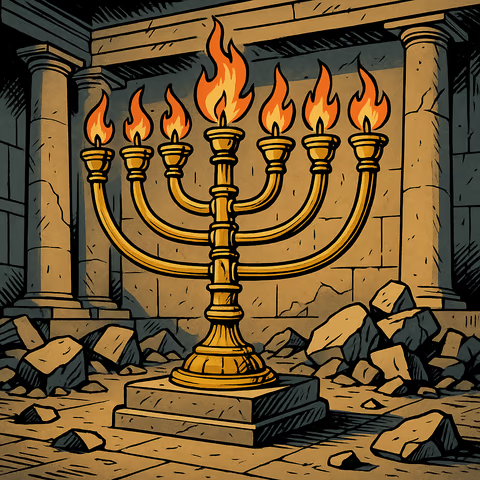 Timeline of the Maccabeean Period
Timeline of the Maccabeean Period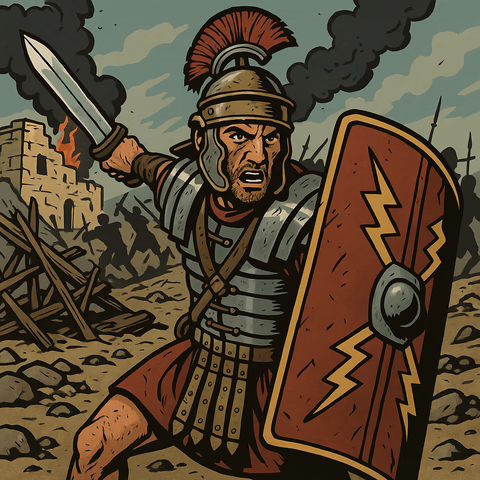 Timeline of the Jewish-Roman Wars
Timeline of the Jewish-Roman Wars Timeline of Jesus' Death and Resurrection
Timeline of Jesus' Death and Resurrection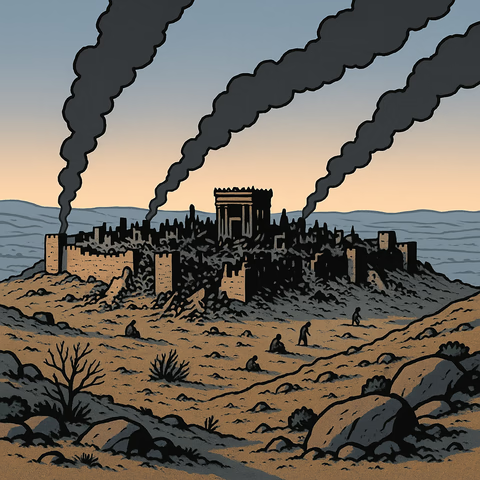 Timeline of the Babylonian Exile and Restoration
Timeline of the Babylonian Exile and Restoration
Timelines: Doctrines
 Timeline of Church Fathers and their Doctrines
Timeline of Church Fathers and their Doctrines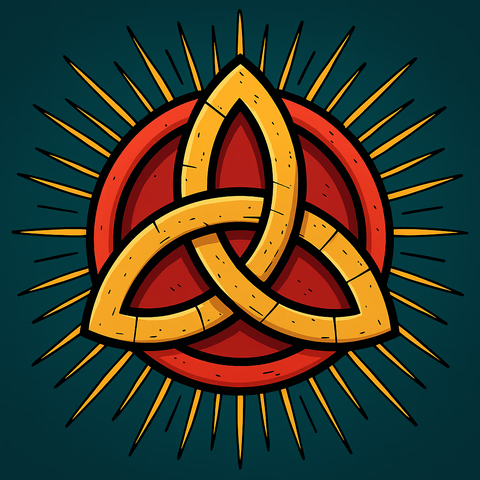 Timeline of the Trinity Doctrine
Timeline of the Trinity Doctrine Timeline of Afterlife Doctrines
Timeline of Afterlife Doctrines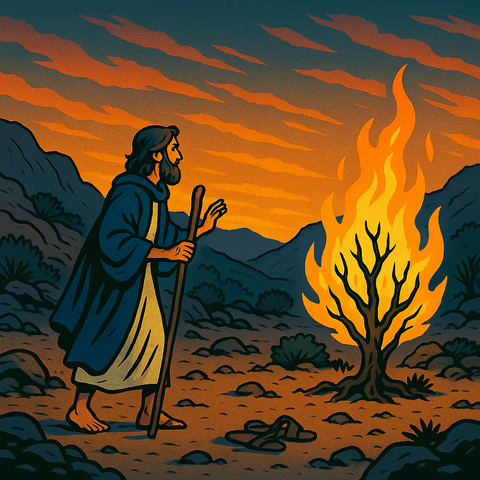 Timeline of God's Name
Timeline of God's Name
Timelines: Miscellaneous
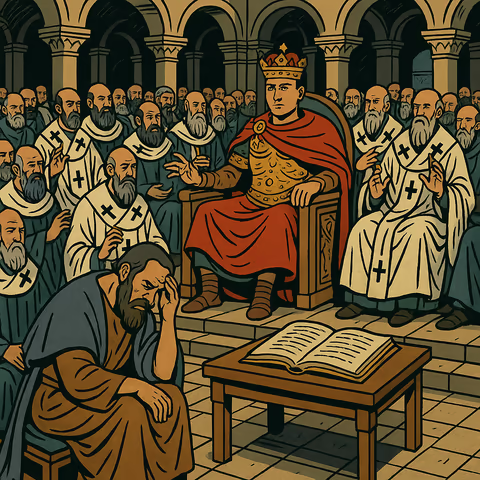 Timeline of Bible Canon Formation
Timeline of Bible Canon Formation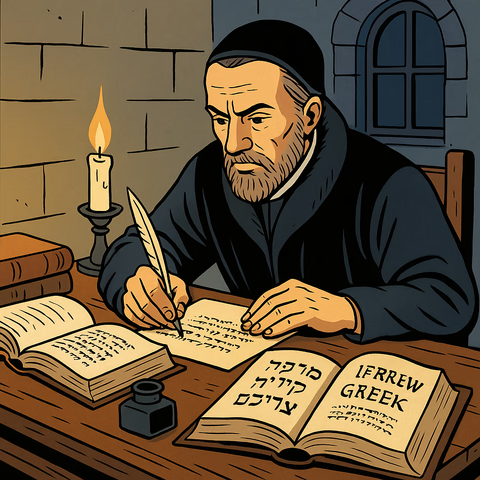 Timeline of Bible Translation
Timeline of Bible Translation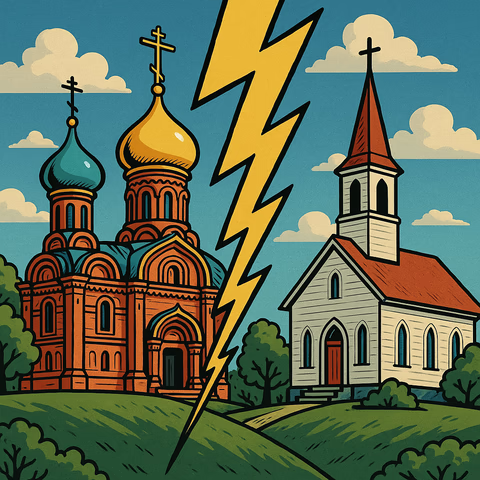 Timeline of Church Schisms, Gnostics, and Sects
Timeline of Church Schisms, Gnostics, and Sects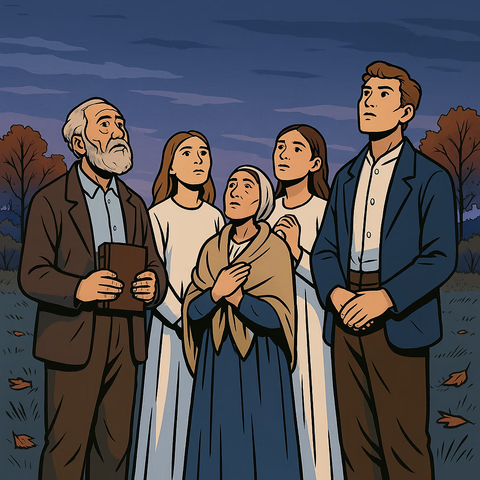 Timeline of Failed Apocalyptic Predictions
Timeline of Failed Apocalyptic Predictions
Also see our Articles index and our About section.